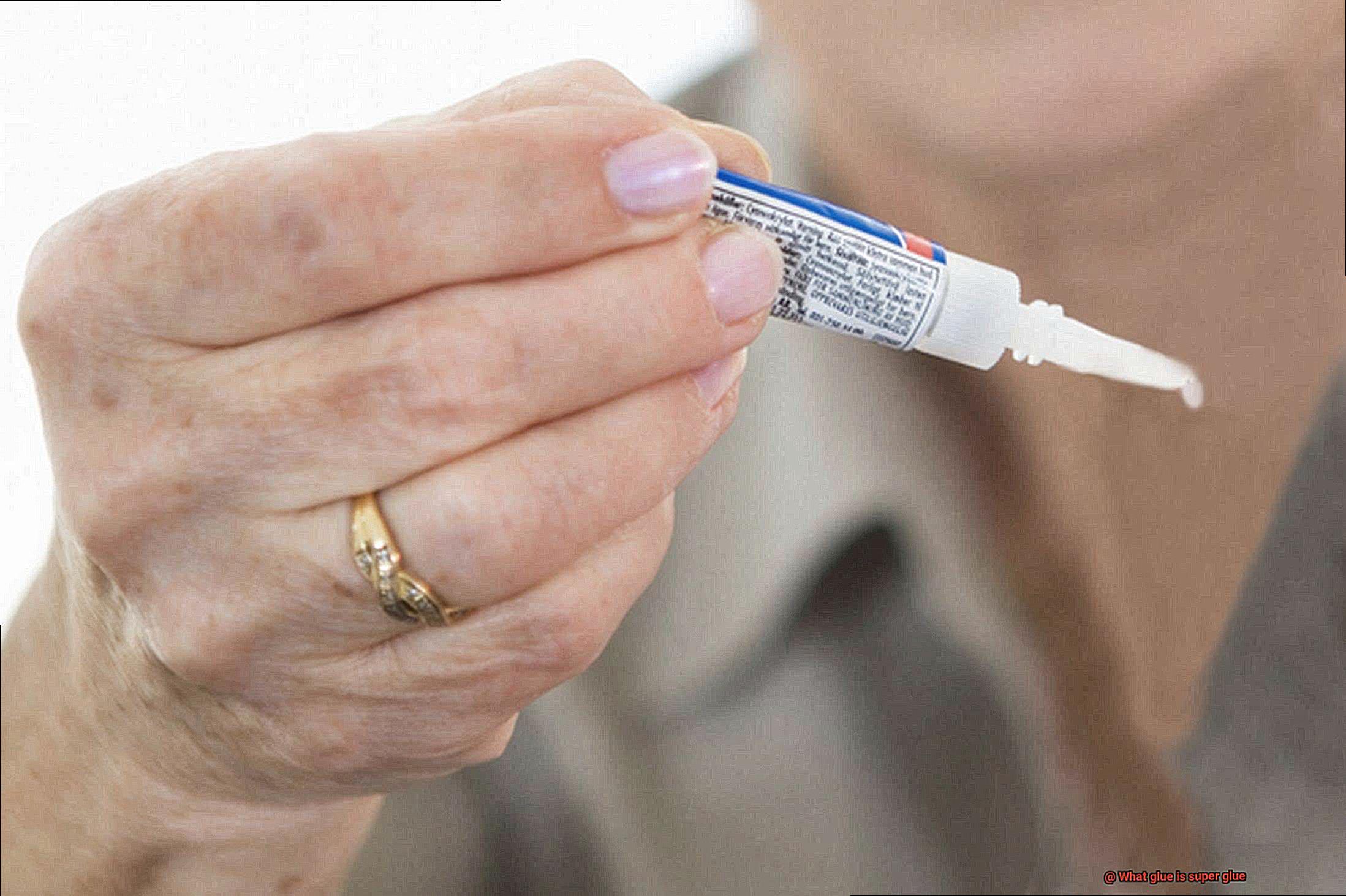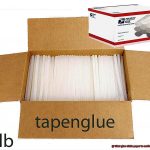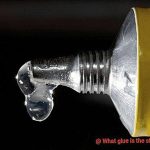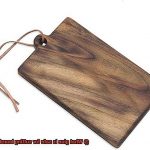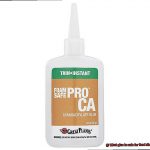Hey there, fellow DIY enthusiasts, crafters, and fix-it heroes. Ever wondered what makes glue so super? You know, that magical sticky stuff that seems to bond anything with a single touch? Whether you’re fixing a broken vase or creating stunning jewelry pieces, super glue has become an absolute must-have in the world of crafting, repairs, and all things innovative.
But here’s the burning question: what exactly is super glue? How does it work its adhesive magic? And are there different types to choose from? Well, my friend, buckle up because we’re about to embark on an exhilarating journey into the captivating realm of super glue. We’ll dive deep into its history, explore its versatile uses, and discover the various types that have captured our hearts.
Let’s start by uncovering how this incredible adhesive came to be. Believe it or not, super glue was actually stumbled upon by accident. From those humble beginnings to becoming the go-to adhesive for countless applications, the story behind this sticky wonder will leave you in awe. So grab your reading glasses and get ready to be whisked away into a world where bonds are formed, materials are adhered to, and endless possibilities await both professionals and everyday creators like you and me.
Are you ready to unlock the secrets of this remarkable adhesive? Stay tuned for an exciting exploration that will turn you into a bona fide super glue aficionado. Get ready to stick around (pun totally intended) as we reveal everything you need to know about this extraordinary substance. Let’s do this.
History of Super Glue
Contents
Glue is an indispensable part of our lives, helping us repair broken items and create new ones. But have you ever wondered about the origins and evolution of one of the most popular adhesives – Super Glue? Join us on a captivating journey through time as we explore the accidental discovery and rise to fame of this household staple.
Accidental Discovery:
In 1942, Dr. Harry Coover, a scientist at Eastman Kodak Company, stumbled upon a groundbreaking adhesive while working on a clear plastic for gun sights during World War II. This compound had a unique property – it stuck to everything, including Dr. Coover’s fingers. Little did he know that this chance encounter would shape the future of adhesives.
The Birth of Super Glue:
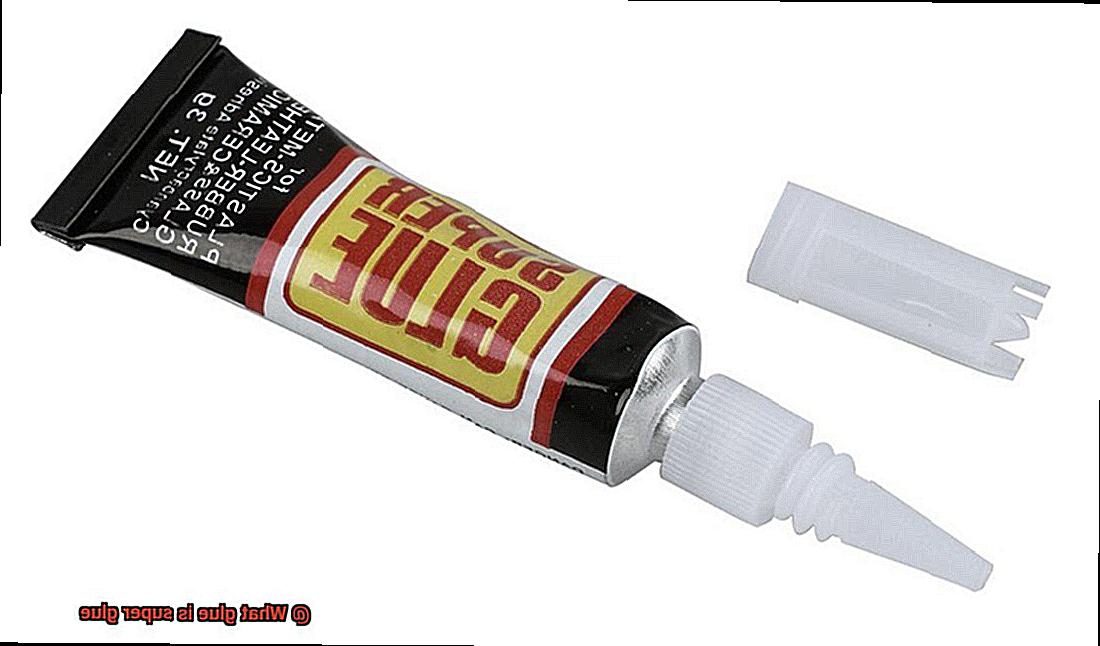
In 1951, Dr. Coover and his team revisited the compound, realizing its adhesive properties. They patented the formula as “Eastman #910.” However, brittleness and lack of durability posed challenges. It wasn’t until the late 1950s when Loctite developed a new formulation called “Super Glue” that things started to change.
The Rise to Fame:
Loctite’s Super Glue addressed previous issues by incorporating additives for improved flexibility and strength. Its versatility made it suitable for various applications. In the 1960s, emergency medical personnel used Super Glue during the Vietnam War to bond wounds quickly when traditional sutures were unavailable.
The Super Glue Phenomenon:
The 1970s brought commercial success for Super Glue with captivating television advertisements. The iconic “Super Glue Challenge” campaign showcased its exceptional strength by holding objects together while suspended in mid-air. This left a lasting impression on consumers, establishing Super Glue as the go-to adhesive for countless projects.
Evolution and Versatility:
Super Glue has evolved over the years, with advancements in adhesion strength, drying time, and versatility. Today, it is widely used in various industries for bonding materials such as metal, plastic, rubber, ceramics, and even certain types of fabric. Its ease of use, quick drying time, and strong bonding capabilities have made it a household name.
The Main Ingredient in Super Glue
Prepare to be amazed by the power of cyanoacrylate, the main ingredient in Super Glue. Derived from the reaction between cyano groups and acrylate monomers, this fast-setting adhesive forms an incredibly strong bond that will make your jaw drop.
When cyanoacrylate is exposed to moisture, it undergoes a mind-blowing polymerization process. Picture it like a secret code being activated, causing long chains of molecules to form and create a super solid bond. But that’s not all – this reaction also releases heat, putting on a tiny firework show right before your eyes. This heat not only adds some excitement to your glue session but also speeds up the bonding time, so you can get back to your project in record time.
And let’s talk about speed – Super Glue is famous for its quick-drying properties. It sets within seconds or minutes after application, saving you from the agony of waiting for things to dry. It’s perfect for those moments when you need something fixed ASAP.
But remember, not all materials are created equal when it comes to Super Glue. It works best on non-porous surfaces like glass or metal, which don’t absorb moisture and allow the glue to work its magic without any interference. If you’re bonding porous materials like wood or fabric, a little extra moisture or surface preparation might be needed for optimal results.
Now, here’s where things get really interesting – Super Glue isn’t just for fixing broken things. It has a whole range of applications. Think bonding small parts together or even closing wounds in medical settings. Yes, you heard that right – Super Glue has made its way into hospitals because it’s just that good at sticking things together.
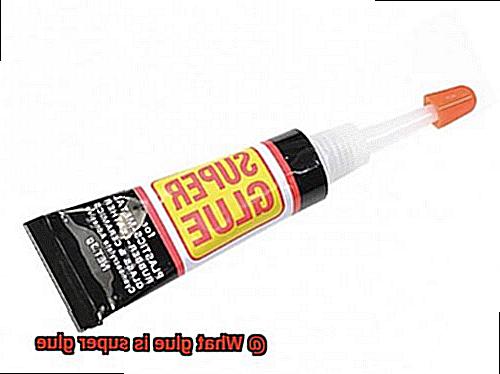
But beware, my friends. Super Glue is a powerful adhesive that doesn’t discriminate. It can bond skin and other surfaces with lightning speed. If you find yourself accidentally stuck, fear not. Soaking the affected area in warm soapy water or using acetone can help dissolve the adhesive and set you free.
Initial Issues with Cyanoacrylate
Cyanoacrylate glue, also known as super glue, has earned its reputation as a superhero of adhesives. However, it wasn’t always smooth sailing for this remarkable adhesive. When it was first discovered in the 1940s by Dr. Harry Coover Jr. and his team at Eastman Kodak Company, they faced a number of initial issues that needed to be addressed before it could evolve into the super glue we know and love today.
One of the first challenges they encountered was the stickiness of cyanoacrylate. While it may seem like a dream come true for an adhesive to be incredibly sticky, it actually posed a problem when it came to handling and application. Imagine trying to apply glue to a delicate object, only to have it stick to your fingers instead. It was far from ideal.
But that wasn’t the only hurdle they had to overcome. Early versions of cyanoacrylate had an infuriatingly short shelf life. They would quickly polymerize when exposed to moisture in the air, rendering them useless after just a short period of time. It was truly a sticky situation.
Thankfully, manufacturers recognized the immense potential of this powerful adhesive and were determined to make it more user-friendly. They began refining the formulation by adding stabilizers and controlling the rate of polymerization. This not only extended the shelf life of cyanoacrylate but also made it easier to handle and apply.
Another breakthrough came when researchers discovered that cyanoacrylate actually required moisture to cure properly. This led to the development of “activators” or “accelerators” that provide the necessary moisture or humidity to speed up the curing process. It was an ingenious solution to a problem that initially seemed insurmountable.
Safety concerns were also a significant issue with early versions of super glue. The adhesive had a tendency to bond skin instantly upon contact, making accidental spills or mishaps particularly problematic. To address this, manufacturers introduced new formulations with reduced bonding strength and improved safety features. This not only made super glue safer to use but also allowed for easier removal if needed.
Improved Formulation of Cyanoacrylate
In the world of adhesives, one product stands out as a true superhero – cyanoacrylate, or super glue. This remarkable adhesive has undergone a remarkable transformation, thanks to advancements in its formulation. With improved performance and user-friendliness, cyanoacrylate has become the go-to adhesive for countless applications. In this article, we will delve into the key improvements made to the formulation of cyanoacrylate, which have revolutionized its capabilities.
Enhanced Flexibility and Impact Resistance:
Gone are the days when cyanoacrylate was rigid and prone to breaking under stress. The addition of rubber additives to its formulation has bestowed it with newfound flexibility and impact resistance. This means that even materials subject to constant movement or vibration can be bonded securely, without the fear of bond failures caused by shocks and stresses.
Lightning-Fast Curing Times:
Nobody likes waiting around for glue to dry. Fortunately, cyanoacrylate has embraced the need for speed with the inclusion of accelerators in its formulation. These accelerators dramatically reduce curing times, ensuring that projects can be completed swiftly. This improvement is particularly advantageous in time-sensitive industries such as manufacturing and construction.
Conquering Challenging Surfaces:
Some surfaces have always been notoriously difficult to bond with traditional adhesives. However, cyanoacrylate has met this challenge head-on with the introduction of surface activators in its formulation. By applying a surface activator prior to gluing, even plastics and metals can be successfully bonded, resulting in strong and durable connections.
A Breath of Fresh Air: Low-Odor and Non-Irritating Formulations:
Gone are the days when using super glue meant choking on noxious fumes or risking skin irritation. Today’s cyanoacrylate formulations boast low-odor properties that make working in confined spaces more pleasant. Additionally, manufacturers have developed non-irritating formulations that minimize the risk of skin allergies or irritation, making super glue safer for users.
The Invention of “Super Glue”
The invention of super glue, also known as cyanoacrylate adhesive, is a captivating tale of accidental discovery and years of development. Dr. Harry Coover, while working at Eastman Kodak Company in 1942, was originally focused on creating a clear plastic for gun sights during World War II. Little did he know that his pursuit of this plastic would lead to the creation of one of the world’s most popular adhesives.
During his experiments, Dr. Coover and his team stumbled upon a substance with an unexpected property – it stuck to everything it touched, including their own skin. Initially, they found this to be more of an annoyance than anything else. But soon, they realized the potential of this substance as an adhesive.
In 1951, Dr. Coover and his colleague Fred Joyner patented the original formulation of super glue, which was initially marketed as “Eastman #910.” This groundbreaking adhesive gained popularity for its ability to bond quickly and securely. However, it had some limitations – a short shelf life and specific conditions required for proper setting.
Undeterred by these challenges, researchers continued to improve the formulation and make it more user-friendly. In the late 1960s, a new variation called “Super Glue Corporation” was introduced. This improved version had a longer shelf life and was easier to use, quickly becoming widely available for consumers.
What makes super glue so effective is its chemical composition. Cyanoacrylates form strong bonds by reacting with moisture present on surfaces. This reaction creates a polymer chain that solidifies rapidly and forms a durable bond.
Today, super glue is not only used for household repairs but also finds applications in various industries. It has been utilized in medical procedures, dental work, manufacturing processes, and even in space exploration.
While super glue is undeniably a remarkable adhesive, it does have some limitations. It’s not suitable for use on certain surfaces like glass, rubber, or silicone. Removing cured super glue can also be a challenge, but there are solvents available specifically designed for this purpose.
Advantages of Using Super Glue
Super glue, also known as cyanoacrylate adhesive, offers a myriad of advantages that make it the go-to adhesive for any project. From its lightning-fast bonding time to its incredible strength, super glue is a must-have in any toolbox or craft room.
One of the most impressive qualities of super glue is its remarkable speed. Upon contact, it bonds almost instantly, allowing you to complete your projects in no time. No more waiting around for traditional glue to dry – just apply the super glue, hold the pieces together for a few seconds, and voila. Your project is ready to go.
But it’s not just about speed; super glue is also incredibly strong. It creates a bond that can withstand a great amount of stress and strain, making it perfect for heavy-duty repairs or projects. Whether you’re fixing broken metal, plastic, wood, ceramic, or leather items, super glue has got you covered.
And let’s talk about versatility. Super glue can be used for a wide range of purposes, making it a true multi-tasker. From repairing broken items to attaching embellishments to crafts or jewelry, super glue can handle it all. It can even be used in medical settings for closing small wounds – talk about versatility.
One of the most impressive qualities of super glue is its resistance to water and most chemicals. This means that it can be used both indoors and outdoors, in humid conditions or with materials that come into contact with water frequently. No more worrying about your glued items falling apart when exposed to moisture – super glue has got your back.
Another advantage of super glue is its long shelf life. Unlike some other glues that lose their effectiveness over time, super glue typically has a long expiration date and can be stored for extended periods without any issues. So go ahead and stock up on this handy adhesive – it’ll be ready whenever you need it.
Speaking of convenience, super glue is also easy to use. It usually comes in small tubes or bottles with applicators that allow for precise application. The adhesive itself is viscous and easy to control, ensuring that you apply just the right amount without any mess or wastage.
And let’s not forget about aesthetics. Super glue dries clear, leaving behind no noticeable residue or marks. This makes it perfect for projects where the adhesive needs to be invisible, resulting in a clean and professional finish.
Last but not least, let’s talk about affordability and availability. Super glue is generally affordable and can be easily found in most stores. It’s a cost-effective option for various applications, so you don’t have to break the bank to get your hands on this fantastic adhesive.
Polymerization Process Explained
Polymerization is a truly remarkable chemical process that holds the key to the magic of super glue. It is the process of combining small molecules, known as monomers, to create long chains called polymers. In the case of super glue, the monomer of choice is cyanoacrylate, a molecule with a unique structure that allows it to bond rapidly with other materials.
The polymerization process of cyanoacrylate is truly fascinating. It is an exothermic reaction, meaning that it releases heat as it proceeds. But what’s even more intriguing is that this reaction is triggered by the presence of water vapor in the air. Yes, you read that right – water vapor acts as a catalyst for the polymerization reaction.
During the reaction, the cyanoacrylate monomers quickly join together like interlocking puzzle pieces, forming long chains and creating a solid adhesive. This rapid bonding process is what gives super glue its incredible strength and speed. It can bond materials together in mere seconds, providing instant durability and reliability.
But the wonders of super glue’s polymerization process don’t end there. This adhesive superhero has the power to bond to a wide range of materials. Whether it’s metal, plastic, ceramic, or wood, super glue can adhere to them all. It effortlessly bridges the gaps between different surfaces, making it an indispensable tool for repairing broken items or combining different materials.
However, there is one caveat when it comes to using super glue – it despises moisture. Even the tiniest amount of water vapor can kickstart the polymerization process and cause the glue to bond rapidly. So it’s crucial to keep those super glue bottles tightly sealed and stored in dry conditions to prevent premature polymerization.
Fast Drying Time of Super Glue
Super glue, also known as cyanoacrylate adhesive, is renowned for its lightning-fast drying time. This adhesive superhero can bond materials together in a matter of seconds, leaving you in awe of its speed and efficiency.
The drying time of super glue is influenced by several factors, with moisture playing a crucial role. When exposed to water vapor in the air, the cyanoacrylate molecules in super glue undergo a rapid reaction, forming strong bonds almost instantly. This means that a little bit of moisture can actually speed up the curing process, allowing you to complete your project in no time. However, it’s important to strike a balance as excessive humidity or wet surfaces can result in weak bonds or premature curing.
Temperature also affects the drying time of super glue. Higher temperatures accelerate the polymerization process, causing the glue to cure faster. On the other hand, lower temperatures slow down the curing process, which means that if you’re working in a chilly environment, you may need to exercise a bit more patience while waiting for the glue to dry. But fear not. If you find yourself in a warm room, you’ll witness the magic of super glue as it works its wonders even more quickly.
The materials being bonded also play a role in the drying time of super glue. Non-porous surfaces like glass or metal provide an ideal environment for super glue to form strong bonds rapidly. The non-absorbent nature of these materials allows the glue to remain on the surface and cure swiftly. However, if you’re working with porous materials such as wood or fabric, be aware that these materials may absorb some of the glue, resulting in slightly longer drying times.
To ensure optimal drying time and bond strength, it’s essential to follow a few key tips. Firstly, apply a thin layer of super glue to both surfaces being bonded. This ensures an even distribution of adhesive and promotes faster curing. Secondly, press the bonded surfaces firmly together for a few seconds. This pressure helps create intimate contact between the adhesive and the materials, facilitating a strong bond. Lastly, be patient and allow the glue to fully cure before subjecting it to any stress or load. This will ensure that the bond is as strong as possible.
In addition to considering these factors, proper storage of super glue is crucial for maintaining its effectiveness. To extend its shelf life, store it in a cool and dry place away from any moisture. This will help preserve the properties of the adhesive and ensure it remains ready for action whenever you need it.
It’s important to note that different brands of super glue may have slight variations in their formulations and recommendations. Therefore, always read and follow the manufacturer’s instructions for specific guidance on drying time and usage.
eP3xJIJ-TbU” >
Also Read: Krazy Glue – Glue Things
Conclusion
Super glue, also known as cyanoacrylate adhesive, is a powerful and fast-acting adhesive that can bond various materials together. Its incredible strength and quick drying time make it a popular choice for both professional and DIY projects. Whether you need to repair broken ceramics, fix jewelry, or even attach metal to plastic, super glue is the go-to solution.
What sets super glue apart from other adhesives is its ability to create an almost instant bond. In just seconds, this remarkable glue forms a strong and durable connection between surfaces, ensuring a long-lasting hold. Its effectiveness is due to the chemical reaction that occurs when the glue comes into contact with moisture in the air or on the surface being bonded.
But don’t let its small size fool you – super glue packs a punch. A tiny drop of this adhesive can secure even the most delicate objects with ease. From fixing eyeglasses to reattaching broken figurines, super glue’s versatility knows no bounds. It’s like having a reliable helper in your pocket whenever you need it.
One of the key advantages of super glue is its ability to bond different materials together seamlessly. Whether you’re working with plastic, metal, rubber, wood, or ceramics, this adhesive can handle them all. It creates a strong and invisible bond that withstands everyday wear and tear.
However, it’s essential to use super glue with caution as its fast-acting nature leaves little room for error. Once applied, it becomes challenging to reposition or remove without causing damage. Therefore, precision and careful application are crucial when working with this powerful adhesive.
In conclusion, super glue is more than just an ordinary adhesive – it’s a game-changer in the world of bonding materials together. With its incredible strength and rapid drying time, it provides a reliable solution for countless projects big and small.

